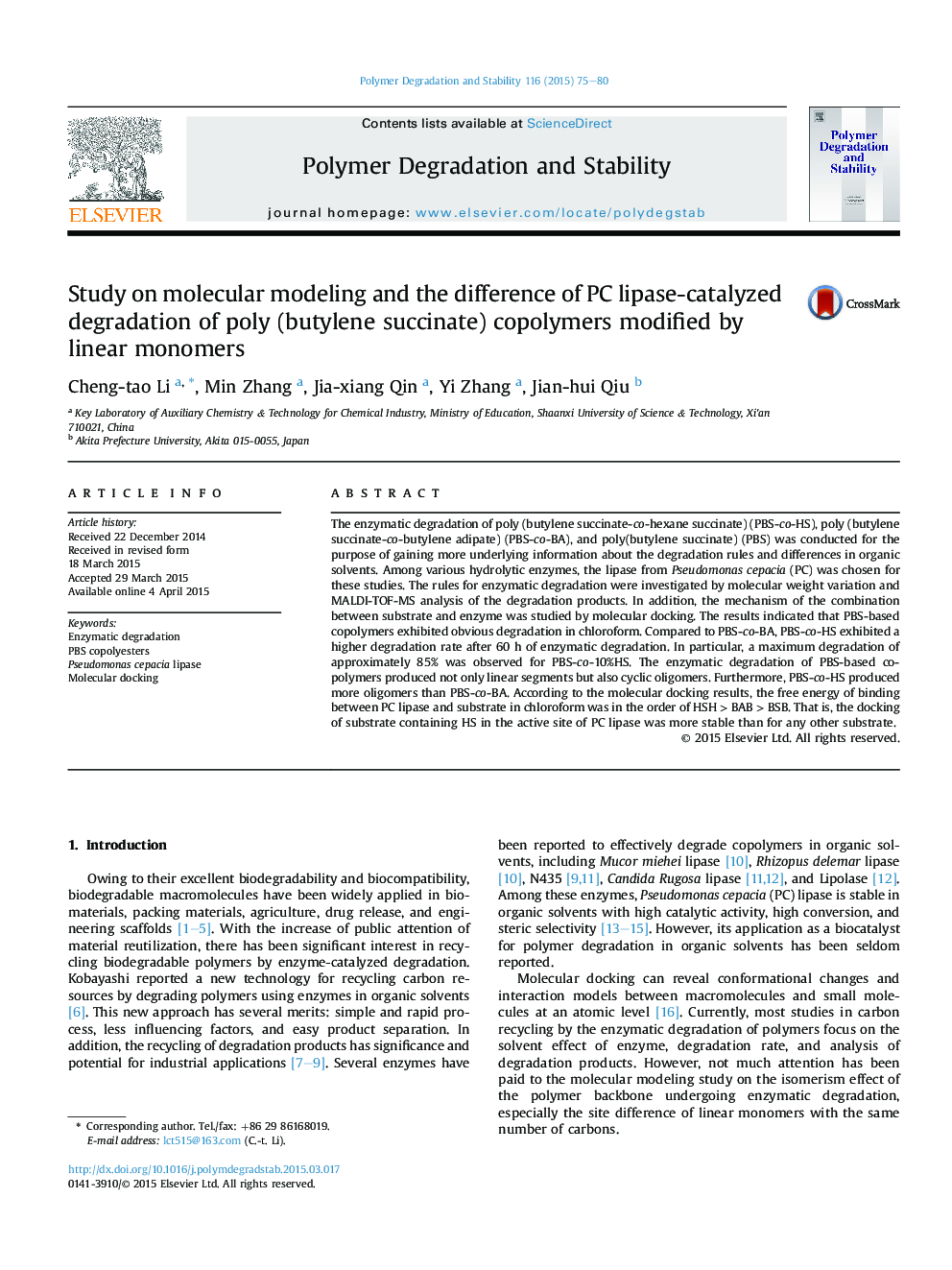| Article ID | Journal | Published Year | Pages | File Type |
|---|---|---|---|---|
| 5201491 | Polymer Degradation and Stability | 2015 | 6 Pages |
The enzymatic degradation of poly (butylene succinate-co-hexane succinate) (PBS-co-HS), poly (butylene succinate-co-butylene adipate) (PBS-co-BA), and poly(butylene succinate) (PBS) was conducted for the purpose of gaining more underlying information about the degradation rules and differences in organic solvents. Among various hydrolytic enzymes, the lipase from Pseudomonas cepacia (PC) was chosen for these studies. The rules for enzymatic degradation were investigated by molecular weight variation and MALDI-TOF-MS analysis of the degradation products. In addition, the mechanism of the combination between substrate and enzyme was studied by molecular docking. The results indicated that PBS-based copolymers exhibited obvious degradation in chloroform. Compared to PBS-co-BA, PBS-co-HS exhibited a higher degradation rate after 60Â h of enzymatic degradation. In particular, a maximum degradation of approximately 85% was observed for PBS-co-10%HS. The enzymatic degradation of PBS-based copolymers produced not only linear segments but also cyclic oligomers. Furthermore, PBS-co-HS produced more oligomers than PBS-co-BA. According to the molecular docking results, the free energy of binding between PC lipase and substrate in chloroform was in the order of HSHÂ >Â BABÂ >Â BSB. That is, the docking of substrate containing HS in the active site of PC lipase was more stable than for any other substrate.
